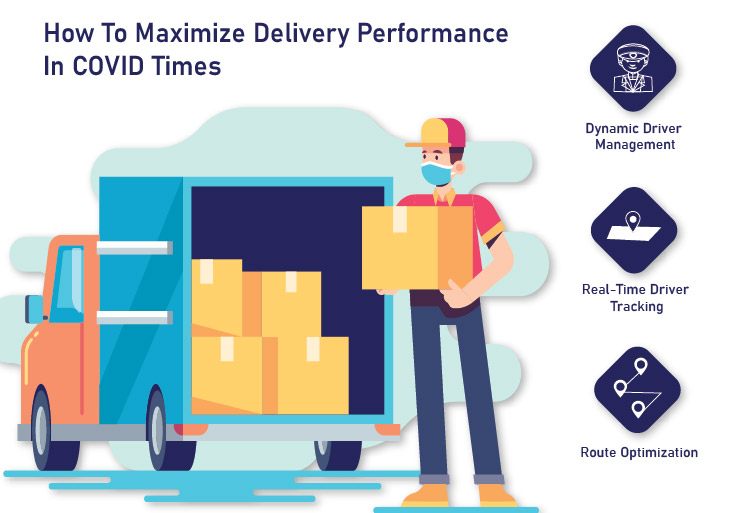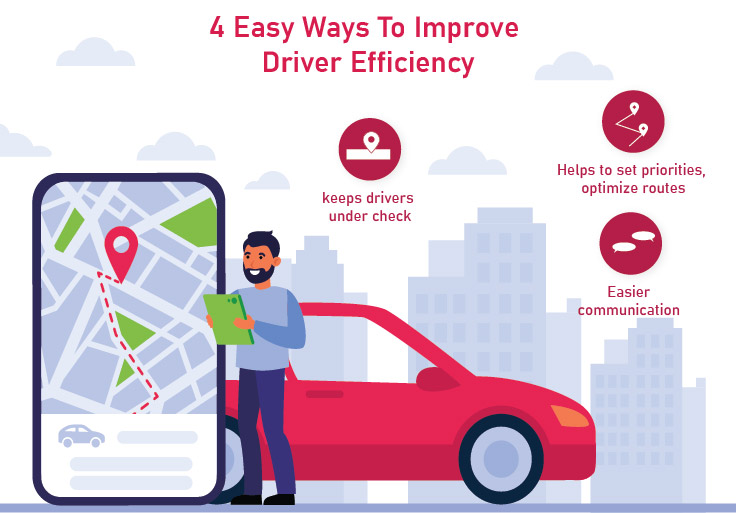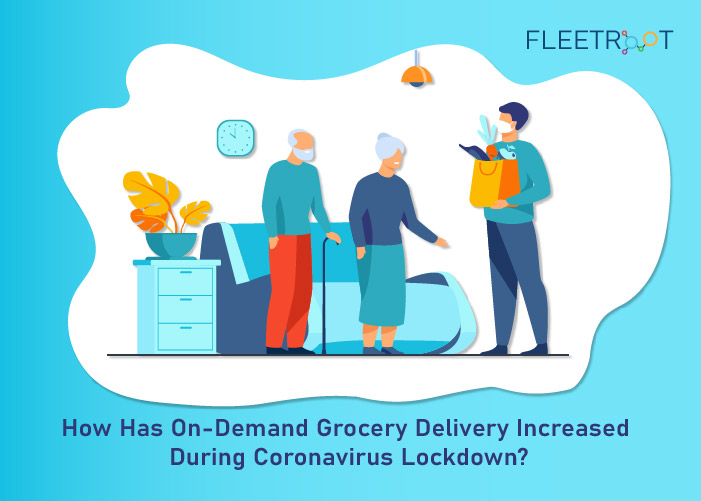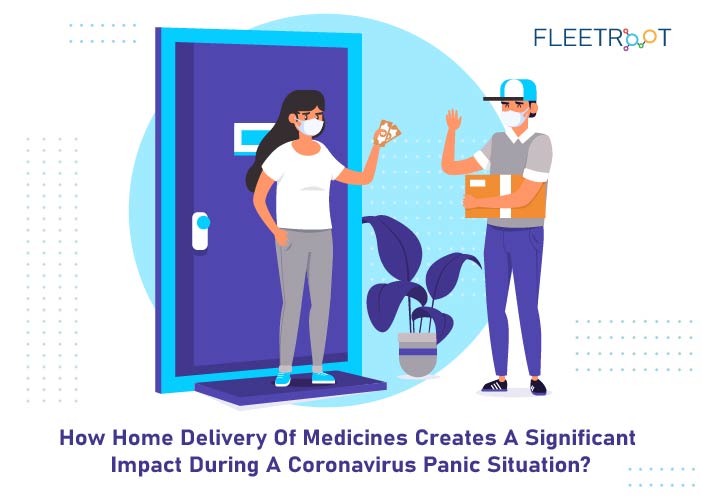The COVID-19 crisis radically changed the dynamics of living and working for people in India and across the world.
As ‘stay home’ and ‘work from home’ became the new norm, the demand for delivery of essential commodities such as groceries and medicines reached new heights.
But few delivery companies could capitalize on the situation and adjust to strict government regulations. The ones that did evidently had the right technology on their side.
The right Delivery Management System ensures high performance and efficiency even in times of crisis. Let us see how:
1.Dynamic Driver Management
The pandemic in UAE witnessed the largest exodus of wage earners from the cities to the hinterlands. While there was a huge turnover of the delivery workforce, many new workers who had got displaced from other industries wanted to join.
Thanks to a flexible and dynamic driver management system, new recruits could be hired and trained in a matter of days.
New government guidelines with respect to sanitization, health and personal hygiene could be communicated across the board, and as transport restrictions eased, the delivery teams could spring into action.
2.Real-Time Driver Tracking
During the crisis, many localities got cordoned off and became no-entry zones.
In the face of severe restrictions and frequent checks at the state, district, and zonal levels it could become extremely difficult for drivers to complete the assigned deliveries.
However, modern day delivery management uses location technology to track drivers/ delivery personnel in real-time.
The delivery managers are constantly in touch with the drivers, monitoring their movement, communicating ground-level situation, and making last-minute changes, so that delays and disruptions are kept to a minimum.
Driver behavior in terms of deviations, frequency of stops, etc. can be easily tracked, contactless delivery can be enforced, and proof of delivery can be instantly transmitted.
3.Flexible Auto-Allocation Rules
There is a system of auto allocation that assigns orders to drivers/ vehicles as per existing resource capacity, to ensure that deliveries are streamlined without requiring any manual intervention.
However, as the on-ground environment changes, the rules and algorithms of auto allocation can be easily tweaked. E.g., the minimum radius within which the system will look for drivers could be tweaked to reflect the new situation.
4.Route Optimization
An intelligent delivery management system uses Artificial Intelligence (AI) to determine the optimal route for delivery.
This means that the system captures and crunches a huge amount of data every day across scores of parameters, and ‘learns’ with every passing day.
Hence even in the face of frequent route restrictions and adjustments, drivers get optimized route plans and navigation guidance – saving both precious time and fuel.
5.Dynamic ETA and Shipping Costs
Even as the demand for deliveries surged globally during the crisis, there was a severe dip in capacities, as both cargo and passenger flights were cancelled.
What’s more, the norms of entry differed between countries and even at the state level. Hence the time and cost of shipping were bound to get impacted.
Without a proper system in place, the delivery companies could lose their customers and even go bust.
But thanks to an AI-driven system, more realistic expected delivery times (ETA) and shipping costs can be predicted and communicated to both businesses as well as customers, and both parties can make well-informed decisions.
6.Tracking Goods – From Order Creation to Delivery
Even the best-laid plans can go awry once the delivery fleet hits the road – and even more so in times of a global pandemic.
However, a unified fleet and connected delivery management system ensures that assets, drivers, and goods are monitored on the go and sellers, delivery managers, and customers get real-time notifications/status alerts at every stage, via smartphone apps.
Customers can easily track their orders, get real-time ETA’s, and even escalate issues. This level of transparency not only inspires confidence and better decision making but also boosts business growth and customer loyalty.
7.Last-Mile Optimization
The last-mile delivery is often cited to be the most expensive, and prone to the most inefficiencies.
At the same time, it is also the most crucial leg, because it defines the customer experience. Even in a pandemic situation, customers have high expectations. They want quicker deliveries and even free deliveries!
The system checks for on-time contactless delivery damaged goods if any, and undesirable driver behavior. It collects proof of delivery photographs and customer signatures, plus instant customer feedback via smartphone apps. This information is then compiled and used to optimize service delivery.
8.Optimal Asset Utilization and Maintenance
With traditional delivery management systems, an increase in demand for deliveries could easily result in a flurry of activity – haphazard allocations and schedules, increased wear and tear, etc.- resulting in frequent breakdowns.
However, an advanced delivery management system determines an optimal selection of carriers and vehicles for delivering bulk or finished items. This ensures optimal utilization of capacities even in times of crisis.
Moreover, vehicle health parameters are constantly monitored via telematics data and preventive maintenance is conducted such that service disruptions are kept to a minimum.
9.Deep Analytics
A single software integrates all operational units, processes, sensors, and touch points – right from order management to delivery and feedback. This generates huge streams of information that can be analyzed over a host of criteria such as driver performance, ETA adherence, reasons for the delay, freight expenses, fuel costs, customer satisfaction, returns, and refunds, etc.
This helps delivery managers and top management to tackle problems as they come and formulate fresh strategies for growth.
Conclusion
The times have changed for people and businesses alike and today, uncertainty is the new normal.
As in any customer-centric business, the end-goal of a delivery business is to keep customers happy and satisfied – no matter what.
In these challenging times, an intelligent and flexible delivery management software can prove to be your biggest ally and most dependable partner. The question is – Are you ready to partner for growth?
Call us for a free consultation today!




